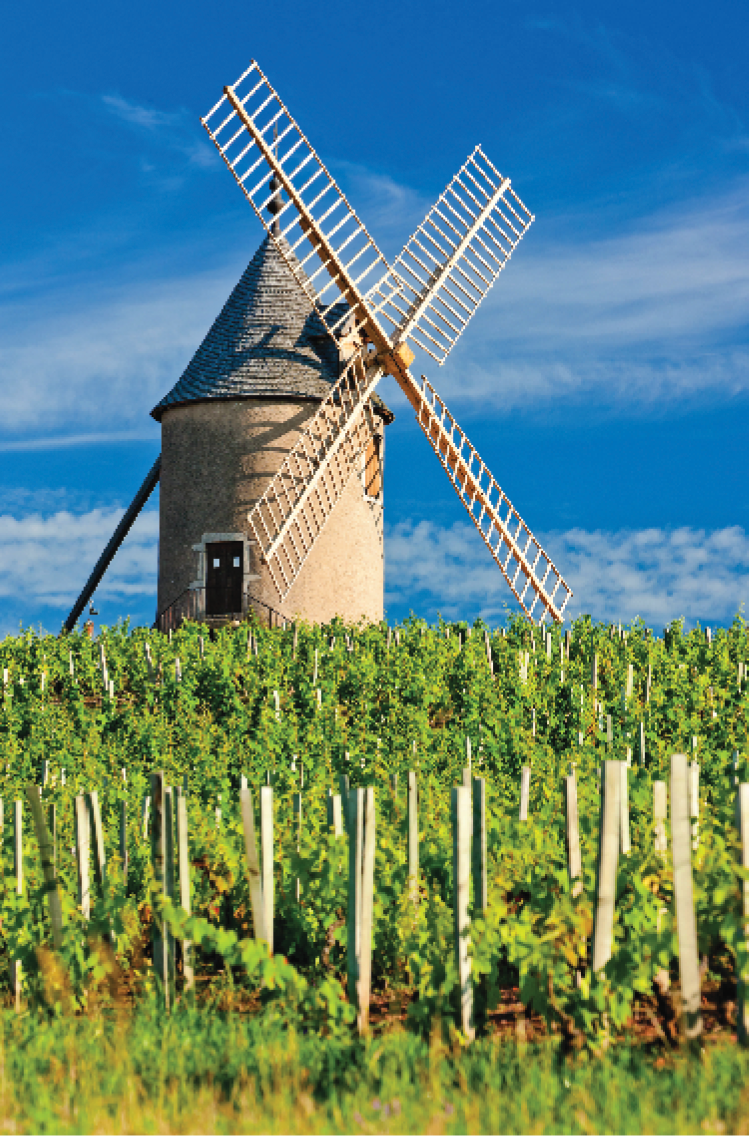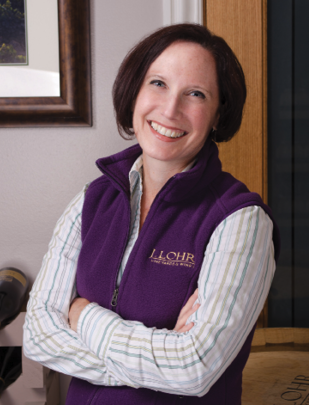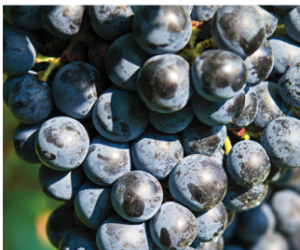 Being a lover of Pinot Noir, I am intrigued and mystified by Burgundy. During my visit to Burgundy as part of a film crew working on a television series about wine, I had the chance to visit many world-renowned domaines. I tasted in the cellar from the barrel and of course, I was blown away by some magnificent wines! I expected to taste amazing reds, and I did. What I didn’t expect was how shockingly, astonishingly, unfathomably delicious the whites are.
Being a lover of Pinot Noir, I am intrigued and mystified by Burgundy. During my visit to Burgundy as part of a film crew working on a television series about wine, I had the chance to visit many world-renowned domaines. I tasted in the cellar from the barrel and of course, I was blown away by some magnificent wines! I expected to taste amazing reds, and I did. What I didn’t expect was how shockingly, astonishingly, unfathomably delicious the whites are.
The Grape
White Burgundy is Chardonnay, plain and simple. In fact, by French law, it must be 100% Chardonnay. (Pinot Noir is the predominant red grape, but other reds — including Gamay and Aligoté — are allowed and are grown in small quantities. A majority of the wine grape acreage in Burgundy is planted with red grapes.)
Good white Burgundy, though, has pretty much nothing in common with what we Americans think of as Chardonnay. The incredible citrus/peach/floral/mineral nose and the corresponding delicate flavors . . . they are like nothing I had ever experienced. White Burgundy completely changed my opinion of what Chardonnay can be in the right terroir with the right kind of winemaking. I don’t mean to sound like some kind of obnoxious Francophile, but man, it’s good.
The problem of course is that cheap white Burgundy is nothing to write home about (or write a winemaking article about), and the good stuff isn’t cheap at all. So many people have simply never experienced it. I have a hard time parting with $50 for a bottle of anything, so you can imagine my feelings on spending that much on a bottle of Chardonnay! And $50 is just the beginning, some highly sought after grand crus go for as much as a few thousand dollars a bottle.
How Do They Do That?
How do they end up making such great wine from Chardonnay in Burgundy? Well, it starts with terroir of course. Burgundy is divided into four regions, or départements — Côte-d’Or, Nièvre, Saône-et-Loire and Yonne. Chardonnay is grown all over the Côte-d’Or, although there are certainly places that specialize in this ancestral white grape of the Burgundy region, such as Chablis, which is located within Yonne. (Try Domaine Laurent Tribut or Domaine Vincent Dauvissat in Chablis for some examples!)
A thousand years of growing grapes in this region has yielded a lot of information on where to grow Chardonnay to achieve its full potential. Some of the best sites seem to have the worst soil imaginable, full of limestone rocks, pebbles and very little of what would appear to be soil. Yet the vines make amazing grapes under these conditions. And, the conditions vary. Burgundy is divided into micro-regions, or climats, that experience different local weather conditions. In their centuries of grape growing and winemaking, vineyards get to know how grapes from individual vineyard parcels differ from the rest of the vineyard.
Irrigation, Intervention
As in all of Burgundy, irrigation is not allowed by law, or tradition. So the weather determines the ripeness, the harvest date, and the yield. The vines have, of course, been growing there for years, so their roots are deep in the rocky soil. The variability in rainfall and other climatic conditions introduces a wonderful randomness to each vintage, presenting challenges to the winemaker each year, and making every vintage different from the next. Sometimes a challenging vintage can produce some surprisingly excellent wines. That’s part of the fun. Once the grapes are harvested, the vigneron’s job is to guide the ferment with minimal intervention to see what Mother Nature came up with. As with red Burgundy (made from Pinot Noir), the wineries do not take an interventionist approach of the kind seen in many New World wineries where every aspect of the winemaking is measured and, if needed, manipulated.
The Sorting Table
At harvest, of course, Mother Nature’s job is over and the winemakers role begins. With red grapes (i.e. Pinot Noir) fruit often goes onto a sorting table to sort out the bad grapes — including those that are damaged, moldy or have turned into raisins — but with white winemaking in Burgundy, the sorting table is not generally used. For example, with Pinot Noir, one would always remove the grapes with Botrytis cinerea, the common fungus that affects grapes everywhere (and if frequently referred to as simply botrytis or the noble rot.) However, for Chardonnay, winemakers often elect to keep some or all of the grapes with the noble rot as it may be a desirable flavor component for the wine. Sorting is not quite as much of an issue.
A general note on the sorting table: sorting tables are a relatively new addition to Burgundy winemaking. Most producers only adopted the sorting table five to seven years ago. Some producers, such as Bruno Clair in Marsannay, insist that you are better off to train the pickers to recognize bad fruit. He insists that bad fruit should be left on the vine or dropped on the ground to avoid having it come in contact with the good fruit in the lugs before the sorting. This step in fact makes the sorting table unnecessary.
The Press
The harvested fruit goes right into a press — no destemming or crushing necessary. The pressed juice then goes into stainless vats for settling for 24-48 hours. This allows all the major solids to settle to the bottom. A small addition of sulfite is done to kill off bacteria and to keep the grapes from browning. This dose of sulfite is small enough to keep from harming the native yeasts, which in most cases will ferment the white wine must.
Barrels
After settling off the solids (little pieces of grape and other material that got through the press), the juice goes directly into French oak barrels. (In contrast, Pinot Noir mostly goes into open fermentation vats, some made of wood, most from treated concrete.) As a general rule, most domaines use 25% or less new oak. The barrels are an extremely important part of the white winemaking process, as the barrel “breathes” this has a variety of positive consequences for the wine. This includes the benefits of microoxidation. A low percentage of new barrels limits the intensity of the oak flavors imparted to the wine.
While the 225 liter (60 gallon) barrel is by far the most popular barrel for both reds and whites in Burgundy, it is also common to see the whites made in 125 liter (33 gallon) Feuillettes (fie-ETTES) in Chablis, and 500 liter (132 gallon) barrels as well. Winemakers have their preferences. Smaller barrels produce more micro-oxygenation of the wine for a given amount of time in the barrel because the surface area to volume ratio of the barrel is larger compared to larger barrels. For each unit of wine volume, there is more wood to “breathe” through in a smaller barrel.
The barrels go into the cool cellar which hovers around 60 °F (16 °C) in the fall. Fermentation starts in a few days on natural yeasts (only a few of the wineries use commercially prepared yeast). If the ferment is particularly slow, a small addition of diammonium phosphate (DAP) — a commonly used yeast nutrient that supplies nitrogen — is sometimes made, but this is the only time a nutrient is added. Nutrients are not added, for example, to aid with malolactic fermentation (MLF).
Malolactic Fermentation
Once alcoholic fermentation is complete, malolactic fermentation (MLF) starts on its own. No malolactic bacterial culture or nutrients are introduced into the wine. No racking is done between the fermentation and MLF. When older, used barrels are employed for fermentation, the malolactic bacteria (preferably just Oenococcus oeni, but in practice it’s like that with some Lactobacillus or Pediococcus strains are also in the mix) is hiding in the wood grain from the last batch, so MLF starts quickly. In batches aged in newer barrels, it may take a little longer for malolactic fermentation to begin. Allowing malolactic fermentation to begin spontaneously — and without pitching a commercially prepared bacterial culture — runs the risk of setting the right conditions for the production of volatile acidity (VA). In Burgundy, VA sometimes gets higher than expected (and Burgundy is known for wines with a little higher VA than in other regions). However, if the barrel being used was not problematic the first time it was used, the malolactic bacteria in it should be capable of performing without producing excess volatile acidity. If a barrel from a previous year were clearly “off,” it would not get re-used for wine production. So, although commercial strains of malolactic bacteria are not used to inoculate the wine, there is some selection of MLB strains in the winery over time.
Most of the time with white production, the cellar has become too cool for MLF to start until spring. If it does manage to start in the fall, many winemakers are starting to use small space heaters to keep the cellar at 60 °F (16 °C) until MLF is complete since it is very hard to restart in the spring if it stops. (Some winemakers will resort to prepared malolactic bacteria cultures to restart a stuck MLF in the spring). Experience has shown that it’s much easier to get MLF to fully complete if it’s not interrupted in the middle with winter. Once MLF is complete, a protective sulfite addition can be made.
Bâtonnage
The stirring of the lees (bâtonnage) seems to be a bit controversial. Bâtonnage is practiced infrequently if at all at many domaines. It is not done as a matter of routine, but instead only in cases where tasting indicates that more mouthfeel is required.
Other domaines claim to perform more regular bâtonnage, but in general, the practice has experienced a downturn in popularity in recent years. Even domaines that do regularly stir the lees tend to do it less than they once did. In general, more bâtonnage occurs in years where the grapes are more acidic and less ripe, and thus benefit from a little more body. In Burgundy, 2007 is an excellent example of a recent vintage where many producers used more bâtonnage, while it was rarely used much at all for the very ripe 2009 vintage.
In the spring, the wine is racked, and often a percentage of the lees are racked with the wine in order to keep some lees, as they assist later with fining. It might be hard to believe, but this single racking is the only time a white Burgundy is normally racked.
The wine will age in the barrel for 10–18 months. Riper years mature more quickly and are often released sooner. Less ripe years often have a lot more malic acid, and MLF will take longer. Thus, the barreling phase takes longer for the wine to be ready to release to the public.
Before bottling, fining is sometimes performed, and bentonite is the most common agent used in white Burgundy fining. Barrels are combined into a large stainless tank to blend the wine from new oak and old oak barrels. Fining is performed in the stainless tank. Once fined, it is bottled.
Unlike most white wines, fine white Burgundy can often age gracefully for 20 or more years. The nose of an older white Burgundy has delicate aromas of honey and some nutty aromas and flavor, but no caramel which is often a sign of oxidation. Of course, a white Burgundy doesn’t have to age for years like a big Cab. It can be enjoyed as soon as it is released.
If you have never enjoyed a fine bottle of white Burgundy, I would like to humbly suggest that now is the time. And if this is your kind of Chardonnay, maybe it’s time to try making your own wine in this elegant style. Who knows, maybe your Chardonnay will rival those of the best in the world?







